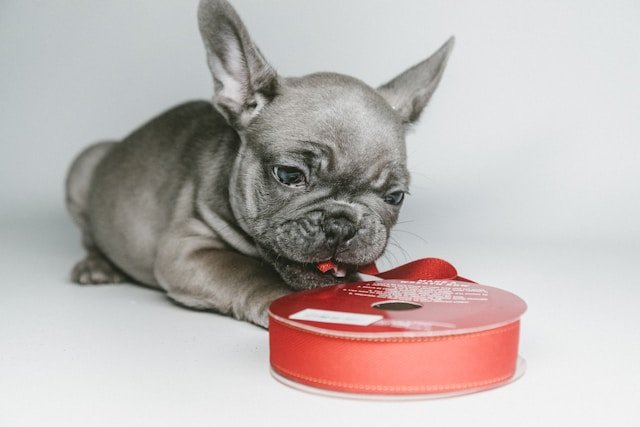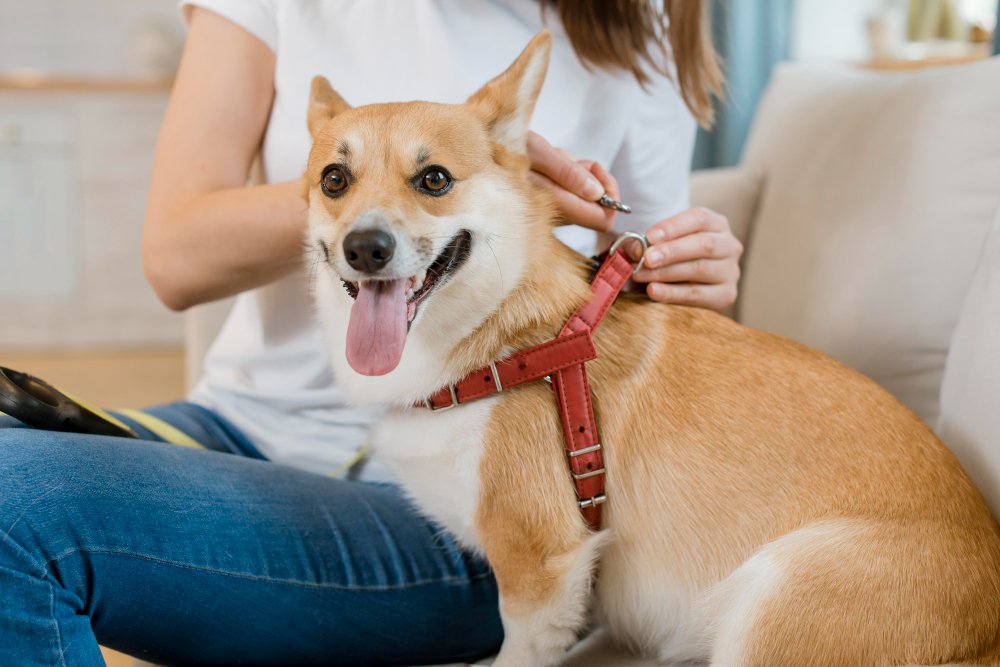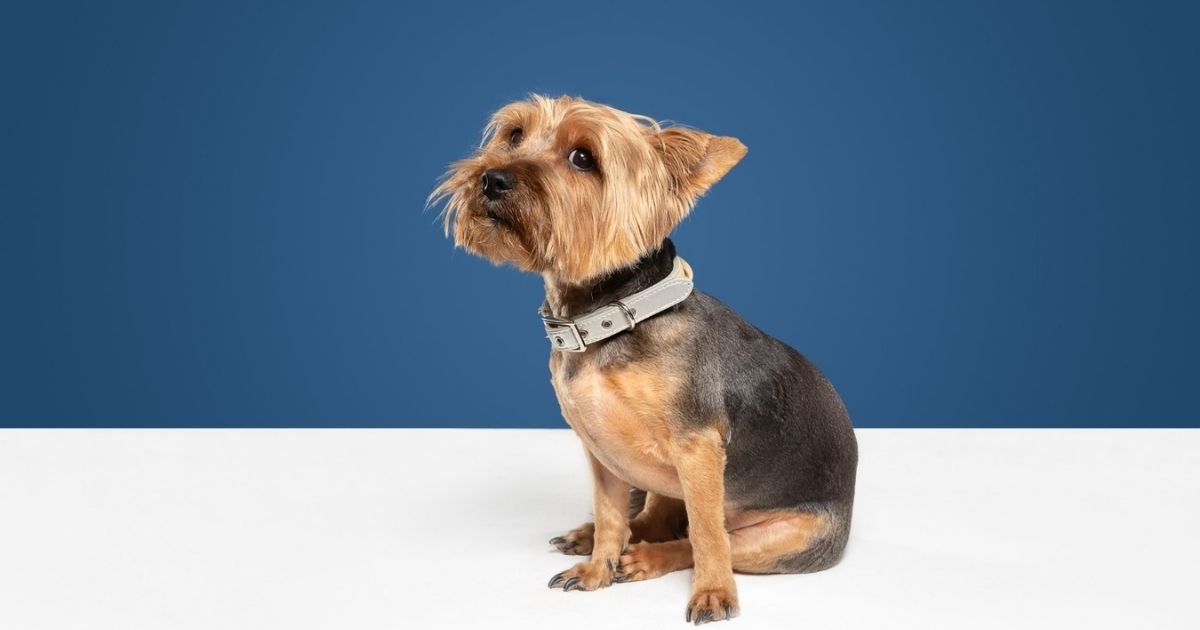Choosing the right collar for your dog is not only important for their comfort and safety but also for their style and personality. However, with so many types, brands, and sizes of dog collars available, it can be confusing and overwhelming to find the perfect fit for your furry friend.
In this blog, we will guide you through the process How to measure your dog’s neck and selecting the best collar type for your dog.
Table of Contents
How to Measure Your Dog’s Neck for a Collar?
The first step to finding the right collar size for your dog is to measure their neck. You will need a soft tape measure or a string and a ruler. Here are the steps to follow:
Start Measuring By Wrapping the Tape Around Your Dog’s Neck:
Wrap the tape measure or the string around your dog’s neck where the collar normally sits. You should be able to fit two fingers between the dog’s neck and the measuring tape or string.
Note the Measurement in Inches:
If you are using a string, mark the point where the string meets and then measure it with a ruler.
Add Two Inches to the Measurement:
This will give your dog some room to breathe and move comfortably.

How to Find the Right Collar Size for Your Dog
Once you have your dog’s neck measurement, you can use a dog collar size chart to find the right collar size for your dog. A dog collar size chart is a table that shows the recommended collar sizes for different dog breeds, weights, and neck measurements.
To use a dog collar size chart, you need to know your dog’s breed and weight, as well as their neck measurement. Then, you can look for the row that matches your dog’s breed and weight, and the column that matches your dog’s neck measurement.
The intersection of the row and the column will show you the suggested collar size for your dog. For example, if your dog is a Beagle that weighs 25 pounds and has a neck measurement of 14 inches, you should look for a small or medium collar that is 14 to 18 inches long.
However, keep in mind that dog collar size charts are only guidelines and may not be accurate for every dog. Some dogs may have thicker or thinner necks than others, even within the same breed.
Therefore, it is always best to measure your dog’s neck and try on the collar before buying it. You should also check the collar’s adjustability, buckle type, and material to ensure it is comfortable and durable for your dog.

Collar Size Information for Different Breeds
While measuring your dog’s neck and using a dog collar size chart are the best ways to find the right collar size for your dog, you may also want to know the average collar size for different breeds.
This can help you get a general idea of what size of collar to look for, especially if you are buying a collar online or as a gift. However, keep in mind that every dog is unique and may not fit the average size of their breed.
Therefore, you should always double-check the collar size by measuring your dog’s neck and comparing it to the collar’s specifications. Here are some examples of collar size information for different breeds:
Small breeds:
These are dogs that weigh less than 25 pounds and have neck sizes between 8 and 16 inches. Some examples of small breeds are Chihuahua, Pomeranian, Pug, Shih Tzu, and Yorkshire Terrier.
The recommended collar size for small breeds is extra small or small, depending on the exact neck measurement.
Medium Breeds:
These are dogs that weigh between 25 and 50 pounds and have neck sizes between 12 and 18 inches. Some examples of medium breeds are Beagle, Border Collie, Cocker Spaniel, French Bulldog, and Miniature Schnauzer.
The recommended collar size for medium breeds is small or medium, depending on the exact neck measurement.
Large Breeds:
Dogs that weigh between 50 and 80 pounds and have neck sizes between 15 and 22 inches are considered large breeds. Some examples of large breeds are Boxer, German Shepherd, Golden Retriever, Labrador Retriever, and Siberian Husky.
The recommended collar size for large breeds is medium or large, depending on the exact neck measurement.
Extra Large Breeds:
These are dogs that weigh more than 80 pounds and have neck sizes between 18 and 24 inches. Some examples of extra-large breeds are Great Dane, Mastiff, Newfoundland, Rottweiler, and Saint Bernard.
The recommended collar size for extra-large breeds is large or extra large, depending on the exact neck measurement.

How to Select the Best Collar Type for Your Dog?
Besides the collar size, you also need to consider the collar type for your dog. There are many types of dog collars, such as flat collars, martingale collars, head collars, slip collars, prong collars, and harnesses.
Each type of collar has its own advantages and disadvantages, depending on your dog’s behavior, training, and activity level. Here are some tips to help you choose the best collar type for your dog:
- Flat Collars
Flat collars are usually made of nylon or leather and have a buckle or snap closure. They are easy to use and suitable for most dogs, especially those that are well-behaved and do not pull on the leash.
However, they may not be secure enough for dogs that can slip out of them or chew through them.
- Martingale Collars
Martingale collars are similar to flat collars, but they have a loop that tightens when the dog pulls on the leash, preventing them from escaping or choking. They are ideal for dogs that have narrow heads or thick necks, such as Greyhounds, Whippets, or Poodles.
However, they should not be left on the dog when they are unsupervised, as they may pose a strangulation risk.
- Head Collars
Head collars are also known as gentle leaders or halters. They are designed to fit around the dog’s muzzle and behind their ears, giving the owner more control over the dog’s head and direction. They are effective for dogs that are strong, stubborn, or aggressive, as they can reduce pulling, jumping, and lunging.
However, they may not be comfortable or well-accepted by some dogs, and they may require some training and patience to use properly.
- Slip Collars
Slip collars are also known as choke chains or choke collars. They are made of metal or nylon and form a loop that tightens around the dog’s neck when the leash is pulled, creating a choking sensation. They are intended to correct the dog’s behavior by applying pressure and releasing it when the dog stops pulling.
However, they can be dangerous and harmful for dogs if they are used incorrectly, excessively, or without supervision.
They can cause injuries, such as neck damage, eye problems, or tracheal collapse. They are not recommended for dogs that have respiratory issues, puppies, or senior dogs.
- Prong Collars
Prong collars are also known as pinch collars or spiked collars. They are made of metal and have prongs that dig into the dog’s neck when the leash is pulled, creating a pinching sensation. They are similar to slip collars, but they are more severe and painful.
They are meant to deter the dog from pulling or misbehaving by causing discomfort and fear.
However, they can also be dangerous and harmful for dogs if they are used incorrectly, excessively, or without supervision.
They can cause injuries, such as skin damage, nerve damage, or infection. They are not recommended for dogs that have sensitive skin, puppies, or senior dogs.
- Harness:
Harnesses are not technically collars, but they are another option for attaching a leash to your dog. They are made of fabric or leather and fit around the dog’s chest and back, distributing the pressure evenly and avoiding the neck area.
They are great for dogs that have neck problems, breathing problems, or injuries, as they do not cause any strain or pain. They are also good for dogs that are small, brachycephalic, or prone to tracheal collapse, such as Pugs, Bulldogs, or Chihuahuas.
However, they may not be effective for dogs that pull a lot, as they may encourage them to do so more.
As you can see, there is no one-size-fits-all solution for choosing the best collar type for your dog. You need to consider your dog’s personality, behaviour, health, and comfort, as well as your own preferences, budget, and goals.
You may also need to try different types of collars and see what works best for you and your dog. The most important thing is to find a collar that is safe, comfortable, and suitable for your dog.

Final Thoughts
A dog collar is not just a fashion accessory, but a tool that can help you and your dog have a better and safer relationship. Therefore, it is worth spending some time and effort to find the perfect collar for your dog. If you have any questions or comments, feel free to leave them below. We would love to hear from you.


1 thought on “How To Measure Your Dog’s Neck?”